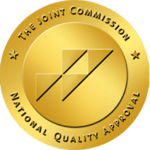Data from the 2021 National Survey on Drug Use and Health indicates that there are at least 2.5 million Americans that have used methamphetamine in the past 12 months, and of this number, at least 1.6 million have an actual methamphetamine use disorder. What’s even more alarming is the same survey reveals at least 32,537 people died from methamphetamine-related overdose deaths. This huge number is attributed to people being more afraid of the meth withdrawal symptoms than of the potential for serious complications or even death due to meth use.
Methamphetamine is a powerful man-made stimulant that directly affects the central nervous system and creates intense feelings of euphoria. Due to its potency, meth use can result in almost-immediate dependency and addiction. Reports indicate that meth has surpassed cocaine and heroin use combined to become the most commonly used hard drug worldwide. In the United States, overdose deaths linked to meth use have increased at unprecedented rates in recent years. For most people who suffer from meth abuse, participation in a meth addiction treatment program in california is the only way to break the addiction cycle successfully.
At Westwind Recovery®, we offer a range of treatment options designed to meet you where you are. Whether you have recently begun using meth and want to avoid becoming addicted or have already crossed that line, help is available in our meth addiction treatment program.
Recognizing the Physical Signs of Meth Withdrawal
By the time meth users realize that they already have a heavy dependency on the substance, they may very well be incapable of dealing or managing the meth withdrawal symptoms on their own. Recreational users will experience a crash after they stop using meth, and this crash could last for several days, while those who are chronic users of meth may have withdrawal symptoms that can last for several weeks. Meth withdrawal symptoms are physically and psychologically painful and debilitating. The desire to avoid withdrawal symptoms usually perpetuates the cycle of addiction, even when a person wants to quit.
The symptoms of meth withdrawal can vary from person to person. The amount of time a person has used meth, the frequency of use, the amount used, whether or not they used other drugs in conjunction with meth, and how they used the drug all contribute to the severity and length of withdrawal. For example, individuals who inject meth will have a more difficult withdrawal than those who smoke or snort it.
The typical physical signs of meth withdrawal commonly include:
- Fatigue
- Increased appetite
- Red and itchy eyes
- Stomach ache
- Excessive sweating
- Disruption of sleep patterns (insomnia followed by hypersomnia)
- Fever
- Dehydration
- Dry mouth
- Dizziness
- Loss of appetite
- Muscle spasms
- Nausea
These physical symptoms usually peak two and three days after the last use and subside after about a week. However, the psychological symptoms can last for multiple weeks, and depression can persist for several months or longer. These psychological symptoms can include:
- Agitation and mood swings
- Paranoia and hallucinations
- Confusion
- Anxiety
- Loss of motivation
- Dysphoria (state of generalized unhappiness, restlessness, dissatisfaction, or frustration)
- Anhedonia (inability to feel pleasure)
- Irritability
- Depression
- Psychosis
- Sleep disturbances
- Drug cravings
- Suicide ideation
While you may feel hesitant to detox so you can avoid these symptoms, the alternative can be deadly. At Westwind Recovery®, the goal of our medically-supervised drug and alcohol treatment works to make all of our clients as safe and comfortable as possible. We will evaluate your needs, get you stabilized, and work closely with you as you transition to our meth addiction treatment program in an inpatient drug rehab.
What is the Meth Withdrawal Duration?

The Crash Phase
The first stage is aptly named “the crash” because of the more intense withdrawal symptoms, making the patient feel like they are “crashing”, with many symptoms peaking within this time frame. Withdrawal symptoms may begin to manifest as soon as 24 hours after the last usage. Symptoms can worsen after day four, with stronger cravings beginning around this time.
Common symptoms in this stage include severe fatigue, depression, anxiety, nausea, sweating, sleepiness, and body aches. The more severe withdrawal symptoms include paranoia, hallucinations, and delusions, which are best treated in outpatient rehab at a treatment center. This phase could last up to 10 days.
The Craving Phase
The second phase may last anywhere between eight to ten weeks. Some of the physical symptoms may begin to subside during this phase, although many patients say they also experience depression, insomnia, lethargy, and intense cravings during this phase.
The Recovery Phase
The third and final stage is a much calmer one and could last for up to 30 weeks or more. Once the patient hits the one-month mark, many say that they are feeling significantly better. Many may still have cravings every now and then, but for the most part, the withdrawal symptoms will have already subsided. It is, however, still very important to be completely focused on addiction recovery in los angeles, as this phase is not exempt from feeling the intense influence of a relapse.
Post-Acute Withdrawal Symptoms
There are instances where patients experience post-acute withdrawal syndrome (PAWS). This means that once the initial withdrawal timeframe has been completed, some symptoms can continue for months or in some cases, years. Symptoms can include depression, lethargy, and severe cravings. It is helpful if the person continues with therapy with a substance abuse professional and/or attends support group meetings to help manage such symptoms.
What to Expect in a Meth Addiction Treatment Program
At Westwind Recovery®, we utilize evidence-based treatments for meth addiction and co-occurring mental health disorders. Clients can enter our meth addiction treatment program to uncover the causes of their addiction. Since addiction is a disease that impacts a person’s physical, mental, and spiritual well-being, we offer comprehensive, holistic addiction and mental health treatment options, including:
- Cognitive behavioral therapy (CBT)
- Dialectical behavior therapy (DBT)
- EMDR therapy
- Motivational interviewing
- Medication-assisted treatment
- Spiritual care and mindfulness practices
- Physical and nutritional health counseling
In addition to individual therapy, substance abuse group therapy is also a critical component to care, as it provides the opportunity to improve communication skills while giving and receiving peer support. Making connections with others who have similar experiences and face similar challenges drastically enhances the therapeutic process.
Contact Westwind Recovery® for Meth Addiction Treatment

The withdrawal symptoms of meth addiction are so severe that they can make people feel trapped, even when there is a strong desire to quit. The meth addiction treatment program at Westwind Recovery® can help find the path to long-term recovery and learn how to prevent relapse. Our goal is to provide our clients with the tools they need to live a healthy, productive, and fulfilling life of recovery. Contact us to begin your recovery today.

Dr. Deena is the Chief Clinical Officer of Westwind Recovery®, an award-winning outpatient treatment center in Los Angeles where she oversees the clinical and administrative program and treatment methods. Dr. Deena is a doctor of psychology and licensed clinical social worker since 1993. LCSW #20628. Originally from the East Coast, Dr. Deena has worked running treatment centers, worked as a therapist in psychiatric hospitals as well as school settings and currently has a thriving private practice in the LA area. Dr. Deena has appeared regularly on the Dr. Phil Show as an expert since 2003. She has also been featured on many other TV shows, podcasts and has contributed to written publications as well as podcasts.




